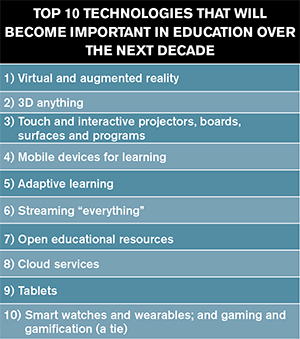How did this happen? How many times do we hear this now, and how many answers are we given?
I think we are all in collective shock, though we are also reflecting on ways to come together, to make a positive impact as we move forward.
Yes, it was in many cases what the New York Times calls the Forgotten Americans who wanted a change. I agree, and also add that it was our lack of focus on adults as learners. Not only because it is good for us to be lifelong learners. That is often the privileged view of people who have access, knowledge, and enough time to BE lifelong learners. We’ve overlooked adult learning as a necessity, because relevancy is a necessity.
When should learning happen for the worker who holds 2 jobs to make ends meet and comes home to care for a family? How will they know if there are options available if they DO find the time, and are not intimidated by the thought? Of course there are not too many options, even if the time is there.
The world has been disrupted with new processes, technologies, and entirely new vocations. We hear of shortages of people to fill jobs, and skill gaps we are not addressing with our education system. Young people in high school or college are steered and encouraged to be relevant. Our entrepreneurs’ focus, our DOE’s focus, and most importantly our funding, goes toward education for young people.
I understand why funding and learning initiatives are targeted toward young people. I have children who are now young adults. They are our future. We hear over and over again that by 2020, there will be a shortage of 1.5 million grads for new jobs available (McKinsey.) I have a son who is a coder. Daughters who are data analysts. Ten years ago did we understand what a coder or a data analyst actually was? Little did we know of how business would be conducted today — any business.
“Jobs” as we knew them are not coming back. Are there incentives and ways to get some companies to repatriate? It won’t be easy. If we have much needed infrastructure investment, will it create more jobs? Probably, but will existing workers know how to be a part of the labor involved in these projects? I will climb the ladder of inference and assume that we don’t build roads and bridges the same way we did ten years ago.
I was surprised, when I co-directed a fellowship a few years ago with the Mayor’s Office of Adult Education in NYC, how small a percentage of the city’s education budget goes toward adults. It was approximately 2–3%. That was in New York City. I can only image how that figure translates in places throughout the country where they can barely find funding for K12 schools.
That is the way it has always been. It is easier to get young people to ingest learning. That’s what they do for a living — they go to school, and they learn. Adults? It means more than providing them with learning opportunities that will help them adapt to disruption and change around them. It is about understandable trepidations of adults who have not been in learning environments for decades, and given the opportunity, often they will not consider. The learning environments might need to be mentorships, reverse mentorships, coaching, informal learning — this is a change management challenge. Every person is different, and that needs to be taken into consideration as well.
There are some wonderful community colleges and career and technology schools that can be attended at very low cost. There is online learning, assuming internet access which I realize we should not assume. There is also the very real fear of failure of adults in those environments, and the funding is barely there for skills education itself, let alone the extra requirements needed to encourage and motivate adults. The practitioners need to be able to work with adult learners, and we are rare.
We forget the adults when we talk about education. People who are working now. The largest generation, the baby boomers, has decades of work life ahead of them, given the chance. Given the knowledge. Given the skills. These are the days when anyone with skills can work, regardless of where they live.
Our children are our future, and they must be prepared for our future. Adults are our now, and it is up to us to help them adapt to ambiguity and learn what they need to know now.











